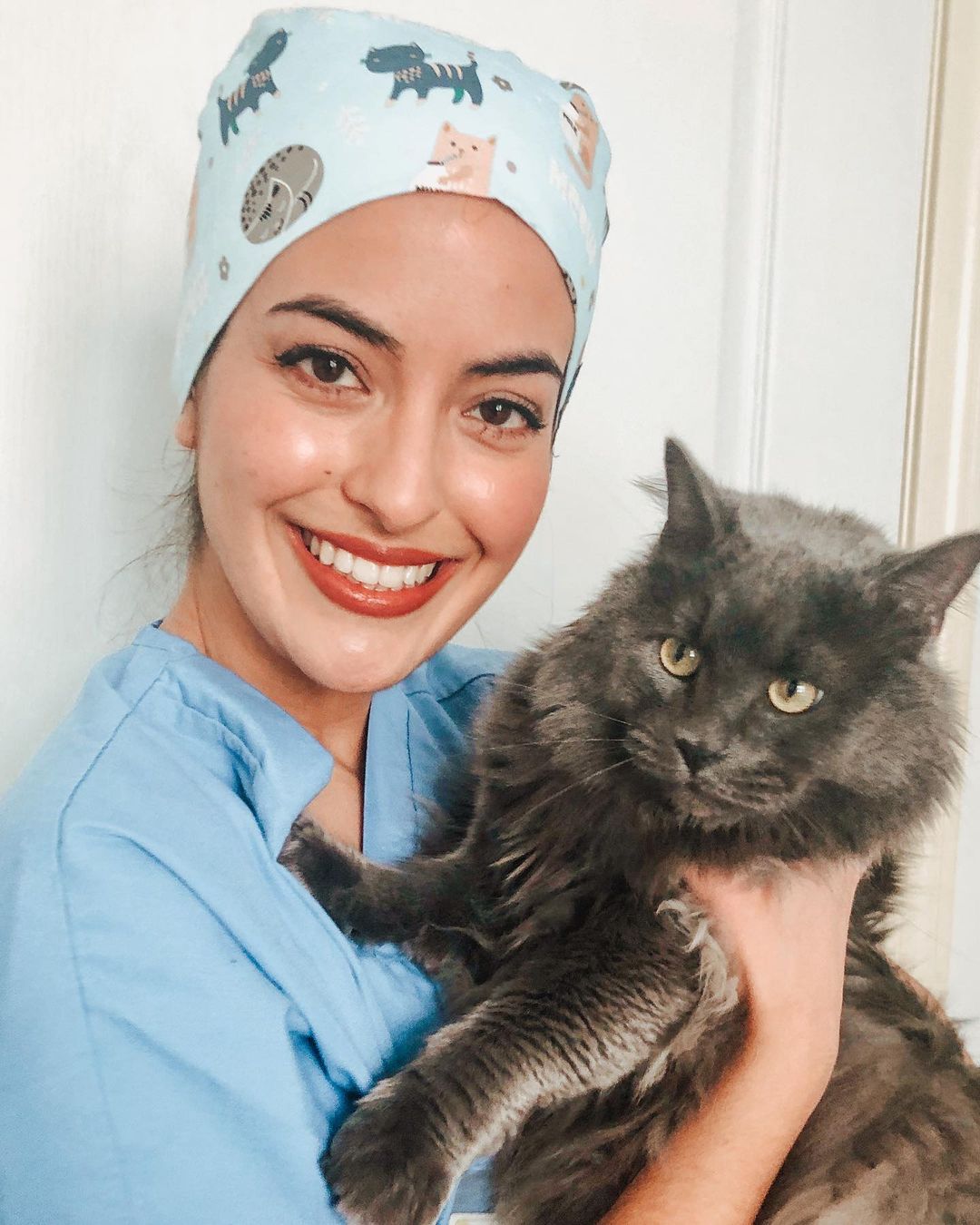What’s the Easiest Vet School to Get Into?
Has this question taken residency into your dreams? Do you love animals and want to take care of them?
If so, this article is for you.
Becoming a veterinary is admirable. It also has potential to be way more interesting than becoming a regular doctor.
You can work in different environments like zoos and farms; you won’t be stuck in hospitals or nursing homes, which can feel claustrophobic.
Getting into vet school and earning your certification is the first step to becoming a veterinarian. Easier said than done. Getting into vet school is difficult, but don’t worry, I’m here to help you.
I’ll tell you though that no matter how easy it is to get into vet school, you will need to work hard and prepare an outstanding application. Acceptance rates are low even in the easier schools.
I will analyze all the various schools and come up with an answer to your question. I will also explain to you why I picked the schools I did.
5 Right Prerequisites for Vet School
Even the easiest vet school in the world has prerequisites you need to satisfy when you apply. The seats are limited, and the competition is fierce, so you need to distinguish yourself from all the other applicants.
For the record, there are only 30 accredited colleges of veterinary medicine in the USA, and the open seats are about 3000, but the applicants are way more, with some applying multiple times over the course of the years. You need your application to stand out.
Each school has its own prerequisites, but some are common across all schools, which is great. It means that you can start working on these areas immediately.
- You don’t need a bachelor’s degree, but it’s best to have one
While a degree isn’t listed as a requirement in most programs, the overwhelming majority of applicants who get accepted have one. In fact, the percentage of applicants who get accepted without a degree is negligible. Plus, you will need to have completed specific courses anyway, so go get a degree.
As for which degree to pursue, look into getting one that includes courses in subjects like Biology, Chemistry, Zoology, and Microbiology, since these will be required in most vet schools. Having a firm foundation in these subjects will not only make it easier to get accepted into the school but also completing your study plan.
The best way to pick the right bachelor’s degree is to check the various vet schools’ requirements and then pick one that will give you solid foundations and that includes the prerequisite courses.
- A strong GPA and GRE scores
I’m not giving you an exact number, because every school has its specific requirements, and some don’t care about GPA at all. You can find stories all over the Internet about people who got accepted with GPAs as low as 2.50.
However, your GPA is a deciding factor in your application, so work on getting it as high as possible. Having a low GPA means having to be outstanding in all other areas of your application, and even then, getting your GPA as high as possible is easier than getting thousands of practice hours in.
Some schools will only care about your GPA in the last 45 semester hours, while others will pay attention to your overall GPA. There’s no hard rule here, but try to raise your score as high as you can.
The same goes for your GRE exam scores. Since you can take the GRE exam multiple times a year, you don’t need to worry too much about it.
Having an excellent GRE score will also vastly improve your application. With your proven strong written communication skills, you can craft an application that the committee will love, so consider working on acing your GRE exam to improve your chances of getting into vet school.
- Pre-vet experience
Nothing beats first-hand experience on the field, and veterinary doesn’t make an exception to this rule. Most schools have a minimum requirement of hours of experience working with veterinarians the committee to consider your application.
The work can be voluntary or paid, what matters is that you prove you care about animals and have experience working with them.
For getting experience, you want to expose yourself to as many animals as possible, even if you plan on specializing in certain species. For example, even if you plan to specialize in treating fishes, look to work on a farm or in a zoo.
Your application will be weaker compared to that of someone who worked in a zoo, a pet clinic, and a farm, even if their work time is lower than yours, because they will have proven experience with a wider range of species.
As for how many hours of experience you need, every school is different, but aim for at least double the minimum requirement of each school. Remember, getting into vet school is about distinguishing yourself from the other candidates, and having many more work hours than them helps you with that.
- Letters of recommendation
This requirement goes hand-in-hand with the previous point. Letters of recommendation are a significant addition to your application, as they prove you have worked hard to achieve your current level. I advise you to get at least one letter of recommendation from an accredited veterinary, and one from an upper-level professor.
Most schools will tell you if and how many letters they want and from whom, but these numbers aren’t arbitrary.
- VMCAS application
VMCAS is the Veterinary Medical College Application Service, and it is the central service that allows you to create one application and use it for multiple different schools. All applications need to go through the system, so create your application there.
Be warned: getting into vet school is hard, it is in fact among the hardest schools to get into, so start preparing early in your school journey. Check out the requirements from different universities, take the right courses, and start looking for work in the field.
What makes it easier to get into a vet school compared to others?
Lower prerequisites aren’t the only thing that makes getting into a vet school. It also depends on your competition and volition.
Imagine the following scenario: a school has 100 open spots and medium requirements, and 1000 people apply to it. Another school has 100 open spots and low requirements, and 2000 people apply to it. It’s better to apply to the first school in this case, since your competition for it will be halved compared to the second one.
There are no hard rules about this. Most schools publish their acceptance rates and how many people apply to them each year, so give those a look. If you can and want, you might also consider going to attend a school that is not in your states.
There are too many variables to give a definitive answer to this question. You are the only person who can answer this question. Consider your priorities, and what you are willing to do to get your vet certificate. Some people are ok with living in a different state and take on more debt to complete college, while others are not.
List of the easiest vet schools to get into
Now that you understand what you need to go into vet school, I can show you the list you’ve been waiting for. While this list tries to be as objective as possible, there are things that can’t be factored when you apply, so getting into these schools, while easier than others, is not simple.
1. Texas A&M
Texas A&M is hands-down the easiest vet school to get into. It has a very high acceptance rate of 27%, which is explained by the low number of applicants it gets.
Look at the requirements too, they are few and easy to get compared to other schools:
- You need to have completed 53 hours of prerequisite work by the end of the spring semester prior to matriculation into the DVM program.
- You need to have completed with a C or better grade courses.
- Organic Chemistry I (with lab);
- Physics I (with lab);
- Biochemistry I.
- Completed most of your science prerequisites by the semester of their application.
That’s it. You don’t need any letter of recommendation or pre-vet work in your application, nor an outstanding GPA.
Having those is probably still somewhat necessary, as your peers might have them, making it more likely for other applicants to get the spot. But at least you won’t be pitted against workhorses with thousands of extra-curricular work hours under their belt.
Know that this vet school is the only one with such low prerequisites, every other school in this list will require you to work way harder to produce a satisfying application.
Also Read: The 5 Best Veterinary Colleges in Texas: Master Animal Welfare (2023 Updated)
2. Tuskegee University
Tuskegee University College of Veterinary Medicine was founded over 75 years ago. With such a longstanding tradition, you can trust your education is in expert hands in the veterinarian field.
Tuskegee is one of the few universities that don’t provide information about acceptance rates and how many students apply to it, so it is in second place purely because of its relatively low requirements:
- You need a GPA of at least 3, and your science GPA has to be at least 2.8
- You need to have completed the following courses with a grade of at least C
- English or Written Composition
- Humanities and Social Studies, which include History, Economics, Psychology, and Sociology
- Liberal Arts which include Arts, Any Language, Music, and others
- Mathematics courses like Algebra, Calculus, Statistics, or Trigonometry
- Medical Terminology
- Advanced Biology Courses like Anatomy, Biology, and others
- Biochemistry with lab
- Chemistry with lab
- Organic Chemistry with lab
- Physics I and Physics II with lab
- Electives such as Genetics, Marine Biology, and others
- Introduction to Animal Science
- Physical Education
- You also need to have completed at least 200 hours of work (paid or volunteer) with a licensed veterinarian
While these prerequisites are quite a lot, picking Tuskegee college allows you to disregard letters of recommendation, which is quite nice. Not everyone has the connections and opportunities to get them, so having the option of skipping them is definitely welcome.
It’s unfortunate that this college doesn’t disclose its statistics about acceptance rates, so it’s hard to gauge how easy it is to get into it, but with these requirements, it shouldn’t be too hard.
3. UC Davis
Another university with a high acceptance rate of 19%, UC Davis has stricter requirements than Texas A&M, but they are still reasonable, let’s give them a look:
- You need a GPA of 2.5 or higher
- You need at least 180 hours of veterinary experience hours
- Three letters of recommendation, one of which has to come from an accredited veterinarian
- Completion of the prerequisites courses with at least a C or better grade
- College physics
- General biology
- General chemistry
- Organic chemistry
- Statistics
- Biochemistry with metabolism
- Genetics
- Systemic physiology
- A bachelor’s degree from an accredited university
Yeah, UC Davis might be the second easiest vet school to get into, but compare these prerequisites with Texas A&M’s…there is an abyss between them. At least you know that with such prime requirements, most applicants will also struggle with offering a strong application.
You’re in luck though, few people apply to this school: only about 700 people apply each year, and about 140 are accepted, so the competition is pretty low.
4. University of Georgia
I wasn’t too sure whether I wanted to include this vet school. The requirements are climbing up at a pace that I’m not comfortable with.
The acceptance rate for Georgia university is 12.2% which isn’t that high, but it’s above average.
So why did I put this vet school here and not another one with a higher acceptance rate?
The reason is competition: only 800 people apply for a DVM course at this university, which means you don’t have to be better than thousands of people to snag a spot for yourself. Getting into vet school is all about maximizing your odds.
For example, compare these numbers with those of Colorado State. This university has a 12% acceptance rate, which is comparable to that of Georgia’s, but over 1100 students apply to study there every year, and the spots are only 30 more. You have 300 more applicants to worry about compared to Georgia. Hardly a desirable prospect.
Applying for a Doctor of Veterinary Medicine in Georgia requires you to have an outstanding resume. Check the requirements out:
- Either a GPA of at least 3.0, or a GRE of at least 308
- Completion of the following courses with a grade of at least C
- 6 hours of English
- 14 hours of humanities or social studies
- 8 hours of general biology
- 8 hours of general chemistry with lab
- 8 hours of organic chemistry with lab
- 8 hours of physics with lab
- 3 hours of biochemistry
- 8 hours of advanced biology courses, excluding behavior, production, and ecology courses
- Three letters of recommendation. One from an accredited veterinary, the others completed by people who can evaluate your background fairly, such as a college professor
- At least 250 hours of veterinarian experience. You must conduct these hours under the supervision of a veterinary
Hardly lax requirements, and yet it’s number 4 on this list. I told you it would not be easy.
Realistically, only number 1 and 2 of this list are actually easy to join. They don’t require letters of recommendation, which is what makes applying to them easy.
Still, there might be factors that make you prefer the last two, like them being closer to where you live, or catering more to your interests. There’s no point in getting into vet school if you are going to hate every moment outside of it.
As you can see from this list of colleges with their respective requirements, getting into vet school is difficult. You need to work hard and
Conclusion
The easiest vet school to get into is by far Texas A&M, because it has both low requirements and a low number of people who apply for it, with Tuskegee coming as a close second.
Getting into vet school is very hard, even the easiest school that seems to have such lax requirements, Texas A&M, has a low acceptance rate. The open spots are very little compared to the number of applicants every year, so schools can’t accommodate everyone.
To get into vet school, you need to show you deserve the spot. Distinguish yourself from other applicants. Study hard for your GPA and GRE scores, create a firm foundation by so set yourself up for success early in your school career.
While it might look like a titanic undertaking, hard work. Words can’t describe the looks of gratefulness you get when you heal a wounded dog, you have to experience it.
Have you made your choice yet? Pick the best vet school for you and apply today.








